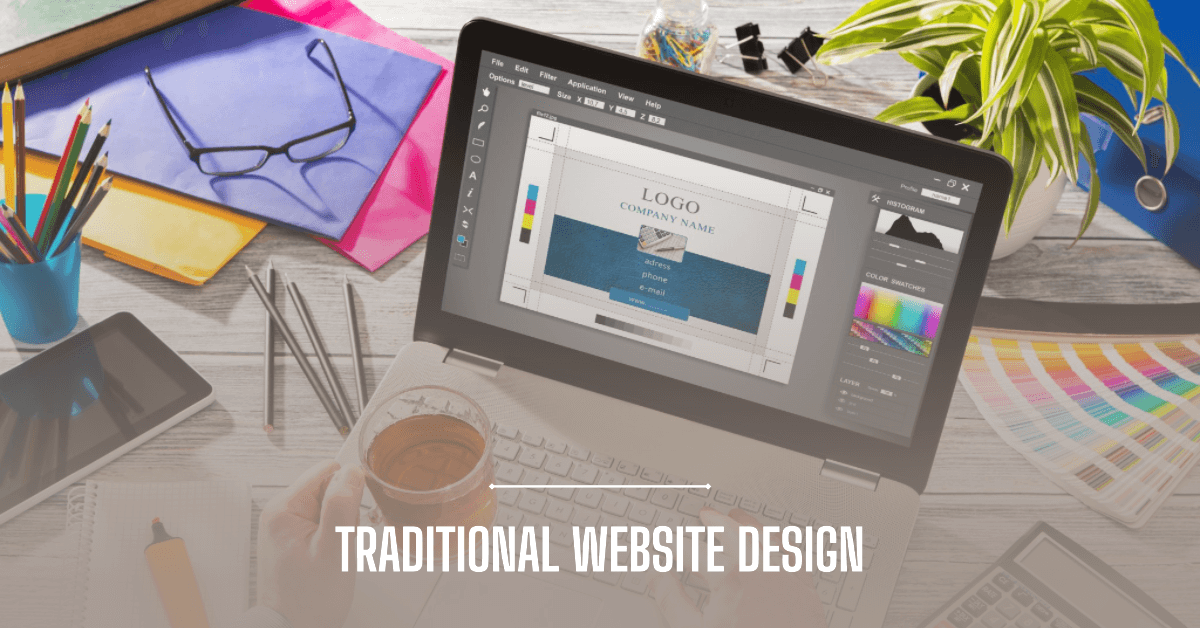Explore the timeless art of traditional website design! Discover the perfect blend of classic aesthetics and modern functionality on our website. Unleash the power of timeless web design principles for a captivating online presence.
In the fast-paced world of web development, traditional website design may seem like a relic of the past, but it holds a unique and irreplaceable charm. Traditional website design focuses on creating websites with a timeless aesthetic, well-structured layouts, and optimal user experiences. This article explores the world of traditional website design, its importance, key elements, and the role it plays in modern web development.
The Evolution of Website Design
Website design has come a long way since the early days of the internet. In the beginning, websites were basic and often cluttered with information. However, as technology and design principles evolved, traditional website design emerged as a response to the need for organized and visually appealing websites.
Importance of Traditional Website Design
Traditional website design is essential because it establishes a strong online presence. In a sea of modern, flashy websites, a traditional design stands out for its simplicity and elegance. It helps build trust with the audience and ensures that content is easily accessible.
Key Elements of a Traditional Website Design
A traditional website design includes elements like clear navigation menus, consistent typography, balanced color schemes, and high-quality imagery. These elements combine to create a visually pleasing and user-friendly experience.
User Experience in Traditional Website Design
User experience is a primary focus in traditional design. Websites must be easy to navigate, load quickly, and provide information in a structured manner. This ensures that visitors have a positive experience and are more likely to stay on the site.
Responsive Design and Its Role
Traditional websites need to adapt to various devices, which is where responsive design comes into play. Ensuring that a website looks and functions well on both desktop and mobile devices is crucial for success.
Content Strategy for Traditional Websites
Content is king in traditional website design. It should be well-organized, engaging, and informative. A well-thought-out content strategy helps convey the message effectively.
Color Schemes and Typography
Choosing the right color scheme and typography is vital. Traditional websites often use classic fonts and a limited color palette to maintain a timeless feel.
Navigation and Site Structure
Clear navigation menus and an intuitive site structure make it easy for visitors to find what they are looking for. This is a cornerstone of traditional website design.
SEO and Traditional Website Design
Search engine optimization (SEO) is not exclusive to modern websites. Traditional websites can benefit greatly from SEO strategies to increase their visibility in search engine results.
Mobile Optimization in Traditional Design
With the increasing use of mobile devices, traditional websites must be optimized for various screen sizes. Mobile optimization ensures that the website remains accessible to all users.
Challenges of Traditional Website Design
Traditional design isn't without its challenges, such as maintaining a delicate balance between simplicity and functionality while keeping up with the latest technology.
Future of Traditional Website Design
Traditional website design will continue to coexist with modern design trends, offering a unique and timeless option for those who appreciate its beauty and functionality.
Final Lines
Traditional website design is a digital art form that combines aesthetics and functionality to create a lasting online presence. Its importance in the digital landscape is undeniable, offering a timeless option for those who appreciate the value of well-structured, user-friendly websites.
FAQs
Q1. Is traditional website design still relevant in the age of modern web design?
A. Yes, traditional website design offers a timeless and user-friendly alternative to modern web design trends.
Q2. What are the key elements of a traditional website design?
A. Key elements include clear navigation, balanced color schemes, and high-quality typography.
Q3. How can I make my traditional website design more user-friendly?
A. Focus on responsive design, clear navigation, and an intuitive site structure.
Q4. Is SEO relevant for traditional website design?
A. Yes, SEO can improve the visibility and accessibility of traditional websites.
Q5. What is the future of traditional website design?
A. Traditional website design will continue to coexist with modern design trends, offering a timeless option for those who appreciate its beauty and functionality.

